Story and photos by Gaulbert Sutherland
At the place where the Mazaruni and Kukui rivers unite in the heart of the jungle sits Jawalla, an Amerindian village of gold mines, casak and religious accord.
It is no Eden; the polluted Mazaruni has taken care of that. The nighttime comes with no serenity because generators devour the silence and villagers grapple with a change of lifestyle that comes with good and bad. For all that, the village is progressing, largely by their own efforts.
Sitting on the banks of the upper Mazaruni, Jawalla – a bastardisation of the original Akawaio word meaning ‘Big Jaguar’ – is a community a little more than half a century old that tries to marry old customs with modern ways. Most of the villagers are Anglican but they also adhere to the Alleluia religion, itself a marrying of Christian teachings with traditional Amerindian beliefs. On Saturday villagers worship in the Alleluia church and the following day, attend the service at the Anglican Church.
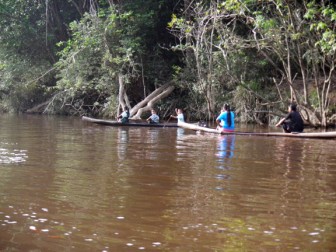
The residents are mainly Amerindians of the Akawaio tribe though there are persons residing there who are not originally from the area but have taken wives from the community. Officially, Jawalla was established in 1953 by a man who was called Henry, said Nobrego Williams, 64, a former Toshao of the village. Henry was an Alleluia church leader and was the first leader for the village, said Leita John, the current Toshao. Currently there are 1135 people living in Jawalla itself while 478 persons live in its three satellite communities.
The banks of the Mazaruni River rise steeply into the hills of Jawalla; sandbanks of white sand line parts of the lazy river and sometimes, in the heat of the mid-day sun, everything, even the generators stop. It is peaceful then and a beautiful place. Even the water.
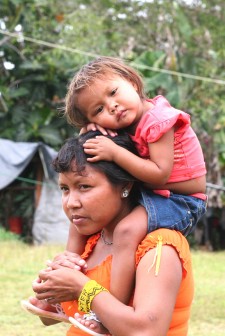
But look closely and the sediments appear. Clear, dark streams that flow into the Mazaruni contrast sharply with the murky brown waters of the Mazaruni itself. John recalls that over six years ago, the water was clearer because the dredges were not so close. “But now you cannot drink the water, you cannot use it for cooking,” she said. A well has been dug which supplies water to parts of the village, but others have to visit streams to get drinking water, some resorting to their boats to find clear water.
“Mining is affecting our traditional life a lot because they are damaging the trees, polluting the water,” John said. “The water is muddy, we bathe inside there, we wash and our skin itches, turn out, skin disease now, diarrhoea and vomiting, typhoid, malaria because of stagnant water.” On a recent Sunday morning, children do not seem to mind the polluted water and play happily while at another landing, a woman washed clothes. Later, in the twilight, another woman in a canoe, fished quietly.
Upriver, some miners have dug up the banks of the river; discoloured water is pumped directly into the channel, and a missile dredge sucks up the gravel and water from the riverbed and spews the murky mixture back into the river, forming a huge sandbank. John says that the living conditions on the dredge are not healthy and points out that the men cook, wash, urinate and defecate there and everything goes into the river. “That is the only source of water what we are using – the river,” she said.
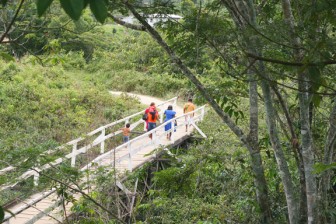
There are numerous sandbanks, many man-made by the dredges that block the channel and make navigation difficult, and one by one the other waterways are being similarly affected. “We used to block creeks and get fish but now they damage the creeks, so we can’t
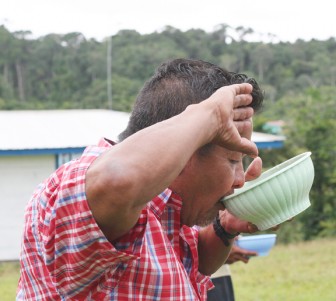
get fish. There are but they people are saying it’s the mercury the fish have swallowed. So all those things are affecting the traditional lifestyle,” John said.
Currently there are 48 dredges within village land including two missile dredges mining for gold. Many are operated by villagers. John said that it was
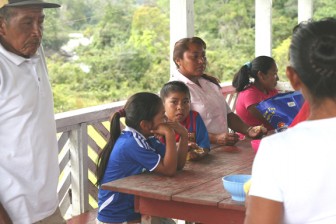
during Williams tenure that mining exploded in the community from ‘spade and shovel’ to the dredges. In 2004, she left for training as a midwife in the city and returned after two-and-a-half years. “When I came back, it was a lot of change,” she said. “When I came
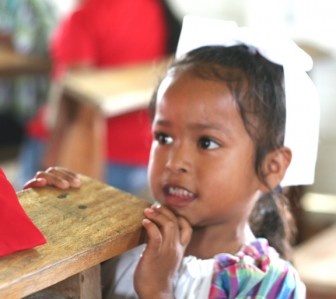
back, the trees were damaged and it is still continuing up to now.”
Mining has taken hold of the community and most young men, and even some women are involved. It is virtually the only job they can find since other options such as teaching are limited. Mining has benefited Jawalla since a 10% fee is levied on the dredge operators and this is used for projects within the community. A community centre, the new health post, the village shop and a multi-purpose centre was built using these funds, while the playfield has many more stands than most on the coast.
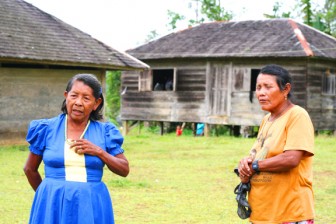
John acknowledges that mining is here to stay since it forms the major part of the economic life of the village. Residents have built modern houses, invested in boats and engines, use gas-guzzling generators, support the shops and generally enjoy a higher standard of living because of
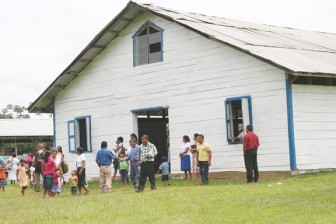
mining. The environment pays the price. “But what is the alternative? That is the problem,” says Williams.
Sometimes, the mines are ordered closed at Christmas and “everybody does groan,” John said. She said that there are many
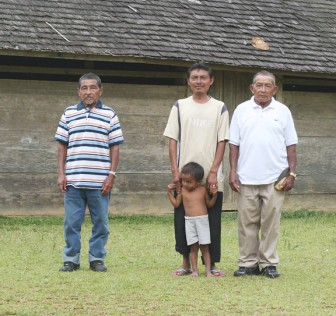
more applications for permission to mine in the community including persons wanting to use cutterhead or missile dredges. But many villagers are afraid that the situation would get worse and these are turned down, she said. Lax enforcement of mining regulations by the Guyana Geology and Mines Commission is also an issue and the officers rarely visit, both she and Williams said. John was forced shortly before the time of Stabroek News recent visit, to go to the office at Imbaimadai to complain about an issue. An ‘outsider’ who linked up with a villager started to mine without permission and was pumping tailings into the river, she said.
Like many Amerindian communities across Guyana, Jawalla is changing. An Alleluia church was built and after the village was officially established, Anglican missionaries started a school in 1956. Children as old as 12 or 13 began to learn to read and write and the village grew.
Now, the traditional ways are dying out, John says. “They [villagers] used to call one another, when they are cutting their farm or when they are reaping their crops and so, they used to call one another and help one another, have fellowship and then fellowship meal, whatever they get, they have to share, not like us,” she said. “Whenever my father shoot deer meat or bush cow meat, he’ll blow his horn early in the morning, people will come, they must get a lil piece, not much but everybody will have to taste it, but it ain’t happening now,” she added.
People continue to fish and hunt and do some lumbering but mining has a big role. “It’s a lot of change. We used to eat on the ground, sleep near the fireside, everything in one: your house and your kitchen, everything is in one,” John recalled. Even the diet is changing but she is still not used to many of the ‘new’ foods, she admits. “If I eat rice today, tomorrow I wouldn’t want to eat rice no more. If I eat roti today, not tomorrow again, but with cassava bread like I cannot fed up eating my cassava bread and my pepperpot and my local drink,” John said. Here all items, including food is expensive. A drum of diesel costs $117 000, a pound of rice or sugar costs $280 while a bottle of oil is about $1300. A bottle of beer is $600.
Williams said that with the younger generation, the lifestyle is changing. “Since they take over, they want to adopt the coastal way of life. They want to forget their culture but we don’t allow that. Our language and culture is very important to us,” insists Williams. “This is our identity,” he said. He emphasizes that the preservation of the language is important. “We don’t want the language to be forgotten at all. That is our identity,” he said.
Social values are changing too. “Once they finish their school, [the youths go] out in the mines. They start to drink, smoke, that’s all they doing,” says John. She said that drug and alcohol use, domestic violence and other crimes are on the rise. She recalled reporting a matter to the police at Kamarang when a resident was shot in her leg by the man (not from the village) with whom she was living, but the law enforcement officials did not pursue the matter with any great urgency until she reported the matter to the commander. The man was eventually charged and let free on bail. At the time, she expressed unease at word that he was coming back to live in the community.
In the male-dominated Amerindian culture, John has had to deal with a few issues and while it was challenging, the Toshao said that she has also learned a lot. “From my part, if the man is carrying me in the correct direction then he will be my head. If he’s doing wrong things he cannot be my head, he will have to turn my tail,” she said.
Not everything has completed changed. In the morning, the cold air invigorates one and people, particularly the elderly one are willing to speak, though in the Akawaio language. In the health centre, the radio squawks as miners and others call and sometimes curse each other. In the health post, a first-time mother rested with her baby. In the early morning, it is easy to believe that it is an Eden in the Guyana jungle. That is before everything starts.




